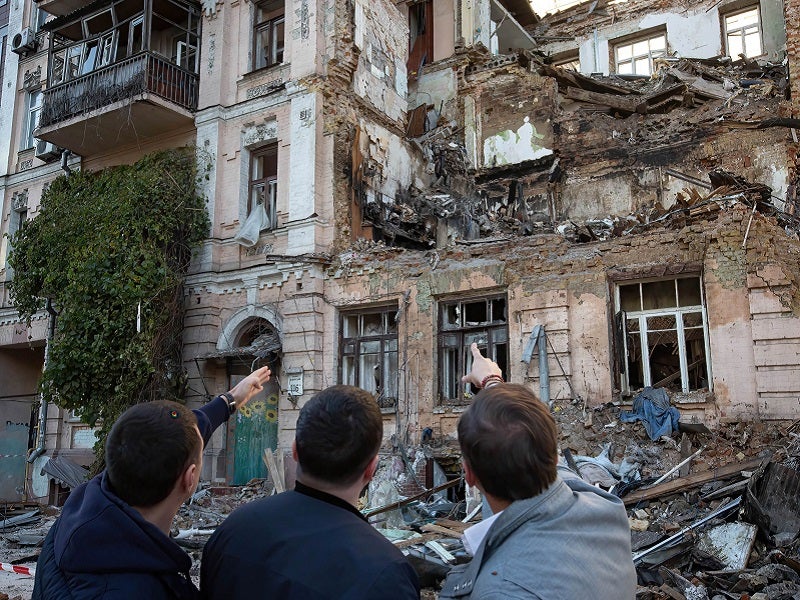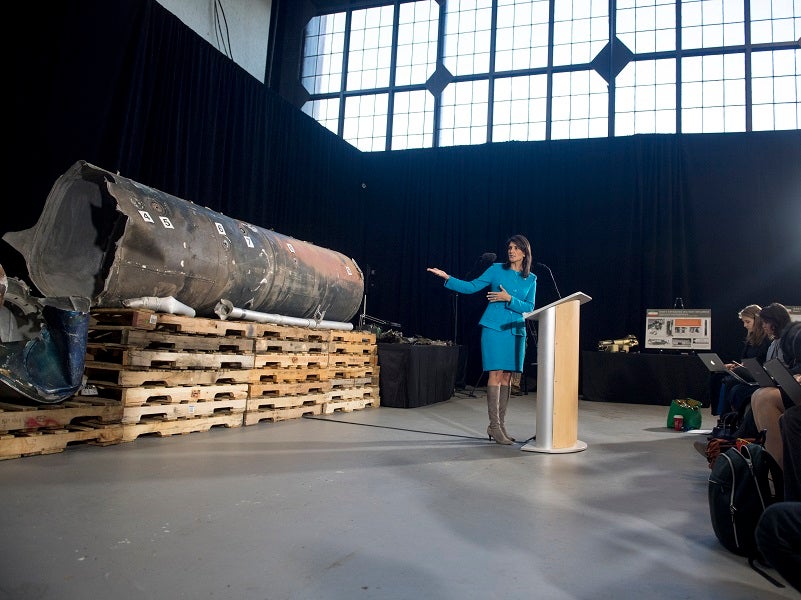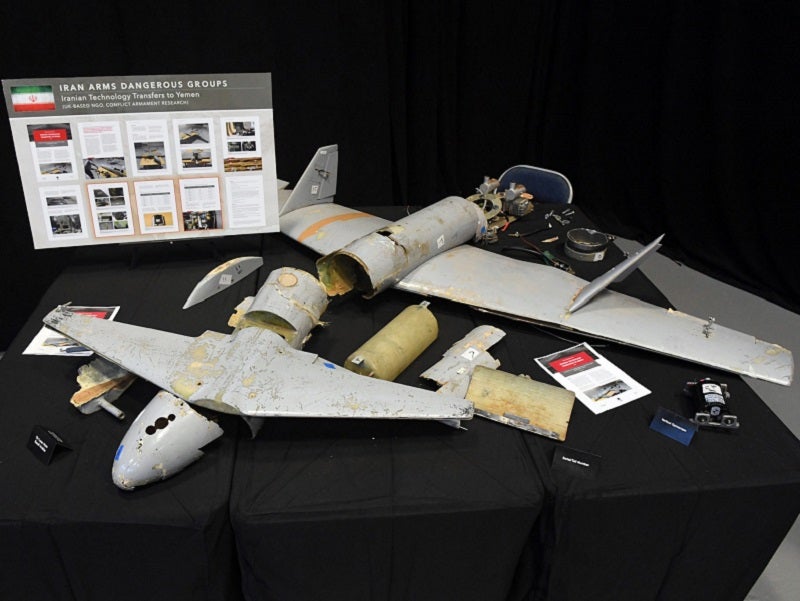
In 2005 Lance Corporal Alan Blackenbury of the British Army’s King’s Royal Hussars was travelling in a Land Rover column out of Camp Abu Naji in Iraq when his vehicle was hit by an improvised explosive device. The blast killed Blackenbury instantly and wounded three other personnel travelling in the vehicle.
According to multiple accounts of the incident, the improvised explosive device had employed an explosively formed penetrator (EFP); a sheet of copper welded over a cylinder containing an explosive charge. Once detonated, the force of the explosive collapses the copper sheet into a slug that travels at supersonic speeds to the target.
Blackenbury’s vehicle is reported to have been penetrated by three such projectiles, each of the holes in the Land Rover were less than an inch in diameter and lined with copper. In addition, the blast had been triggered by a passive infrared trigger, designed to detonate the explosives when the heat of an engine passed it by.
The incident marked a dramatic departure from the tactics typically employed by the Shiite militias in the area. The US filed a secret protest with Iran. The militias were known to have a close relationship with the Iranian Revolutionary Guard Corps (IRGC) and Hezbollah. The US protest filed in July 2005 made clear the belief that Iraqi militias would not have access to these weapons without Iranian support – no such devices had been found in Sunni dominated areas.
By the end of 2006, EFP attacks had accounted for 18% of US and allied fatalities; they were responsible for 30% of deaths in that year’s final quarter. Iran had long been a supporter of forces hostile to the West, the IRGC had sent fighters and trainers to Lebanon in 1982 in support of Hezbollah against Israel’s invasion, and its support for foreign factions had grown from there. However, the war in Iraq provides an interesting start point for understanding the role of Iran in the proliferation of complex weapons.
In 2006, Hezbollah fired a C-802 anti-ship missile at the Israeli missile ship INS Spear as it was cruising off the coast of Lebanon on its way back to Israel. Israeli intelligence told news outlets that approximately 100 IRGC personnel had been responsible for importing, equipping and firing the missile along with Hezbollah fighters.
How well do you really know your competitors?
Access the most comprehensive Company Profiles on the market, powered by GlobalData. Save hours of research. Gain competitive edge.

Thank you!
Your download email will arrive shortly
Not ready to buy yet? Download a free sample
We are confident about the unique quality of our Company Profiles. However, we want you to make the most beneficial decision for your business, so we offer a free sample that you can download by submitting the below form
By GlobalDataPrior to this, Hezbollah had primarily launched unguided rockets into Israel. Whilst problematic, it was possible to engage them and their lack of accuracy created uncertainty, but no risk of a concerted threat to Israeli infrastructure.
The missile strike was unusually advanced and could not have happened without IRGC involvement. From this point, Iranian influence has grown and is most prominent in its support for three forces opposed to the West: the Houthis in Yemen, Hezbollah in Lebanon, and Russia in Ukraine.
Hezbollah
Israeli forces now spend a great deal of effort trying to prevent the introduction of Iranian technology and expertise into Hezbollah’s arsenal. Hezbollah is estimated to possess as many as 130,000 rockets that are primarily unguided. However, Iran has been trying for over ten years to provide the force with guidance kits that can be used to upgrade its unguided rockets, having failed to import complete missiles.

The process is applied to Hezbollah’s Zelzal-2 rockets and involves the installation of a navigation guidance control unit to the rear of the warhead. The whole process can be completed in three hours and costs $5,000-$10,000, according to a 2019 report from the British Israeli Communications and Research Centre. The GPS kits used to upgrade the missiles are approximately the size of a small suitcase, facilitating their export into Lebanon.
Hezbollah is also trying to develop the domestic industry necessary to build the guidance kits, which is a challenge considering the type of facilities and personnel required to do so. Nonetheless, Iran operates a department at its military university that was established specifically to teach Iran’s proxy forces the art of upgrading missiles.
If Hezbollah is successful in upgrading the guidance systems of its rockets, it will enable more accurate attacks against Israel’s critical national infrastructure and complicate the air defence operations of the Israeli Defence Forces. Doing so significantly increases the potential risks for Israel in the event of a war with Hezbollah.
Russia
Russia is the most recent outlet for the proliferation of Iran’s advanced precision strike weapons. The appearance of Shahed-136 loitering munitions over Ukraine in September confirmed rumours that Iran had supplied arms to Russia. Ukrainian President Volodymyr Zelensky has since indicated that Russia may have procured as many as 2,400 Shaheds, which are called Geran-2 in Russian service.
There are elements of their use in Russian service that are unknown. The designation Geran-2, which is Russian for Geranium, indicates that they may be manufactured in Russia as opposed to Iran. This may be achieved through the assembly of kits if so.
The strength of the Shahed-136 is its range, which is often quoted to be 2,000km. Although this is unconfirmed, it does at least appear to be capable of hundreds of kilometres. The drone is thought to navigate autonomously for a portion of its journey and may include a full motion video capability for terminal phase precision guidance in certain situations. This type of guidance has been used by Iranian missiles and drones in the past, so it is reasonable to assume that the Shahed-136 includes a similar system.
The warhead is large compared with Russia’s other loitering munitions – the Lancet and KUB-BLA – and they are often launched in waves. It remains to be seen whether Russia will procure further weapon systems from Iran, but it is already clear that the Shahed-136, and other Iranian drones procured for reconnaissance, are providing Russian forces with some form of long-range strike capability.
The Houthis
The Houthis have received the most extensive aid from Iran, the level of support has increased significantly from 2014. As a result, the Houthis now possess a vast array of long-range ballistic missiles, loitering munitions and attack drones. They have proven to be relatively capable in their deployment; organising attacks against oil facilities in Saudi Arabia with different types of munitions arriving simultaneously.
Some of the Houthi capabilities originate from former Yemeni arsenals and armed forces personnel who have joined the Houthis. However, others are transparently of Iranian origin. For example, the Borkan-2H short-range ballistic missile is assessed to be a lighter version of Iran’s Qiam-1 missile, according to a UN panel of experts.
The Houthis have made extensive use of armed UAVs that can perform multiple missions, and others that are the munition, to launch the attack on the MT Mercer Street tanker, as well as the Aramco facility in Abqaiq. Iran is understood to provide training for Houthi UAV operators and others at its Kashan Air Base near the city of Isfahan – the same base reportedly visited by a Russian delegation before Iranian drones appeared in Ukraine.

With Iranian assistance, the Houthis now possess the ability to conduct strikes against targets at strategic depths within Saudi Arabia. It is understood that the Saudi air defences are often successful, and the number of successful Houthi attacks is far outweighed by those that have little impact. Nonetheless, this is an expensive venture even for the Saudi state, especially when compared with the rather minimal investment made by Iran.
What next?
Iran has been growing its influence in Iraq and Syria for some time, which creates additional avenues for the proliferation of its advanced weapons and expertise. It is already clear that this has taken place, with some attacks on US bases in those countries confidently linked to the IRGC and its proxies.
It is clear that Iran has adopted an asymmetric response to its many opponents and its exports create a challenge that is very difficult to defeat. The provision of expertise and small components creates a nebulous target that even Israel’s advanced intelligence and targeting system must work hard to overcome. The outcome of these kinetic operations can only have a limited impact on proliferation, although Israeli sources do claim to have significantly degraded Hezbollah’s precision programme.
In any case, it is apparent that western forces considering any future deployment to the Middle East, Africa, and perhaps even further abroad, should expect to face an opponent that has been assisted and armed by Iran. This will have a markedly different character to the assistance that enabled Shia militias in Iraq to increase their success rate against coalition forces. It will likely be multi-domain in nature, requiring robust air defence networks, integrated national level intelligence, and very short sensor-to-shooter cycles if excessive attrition is to be avoided.



